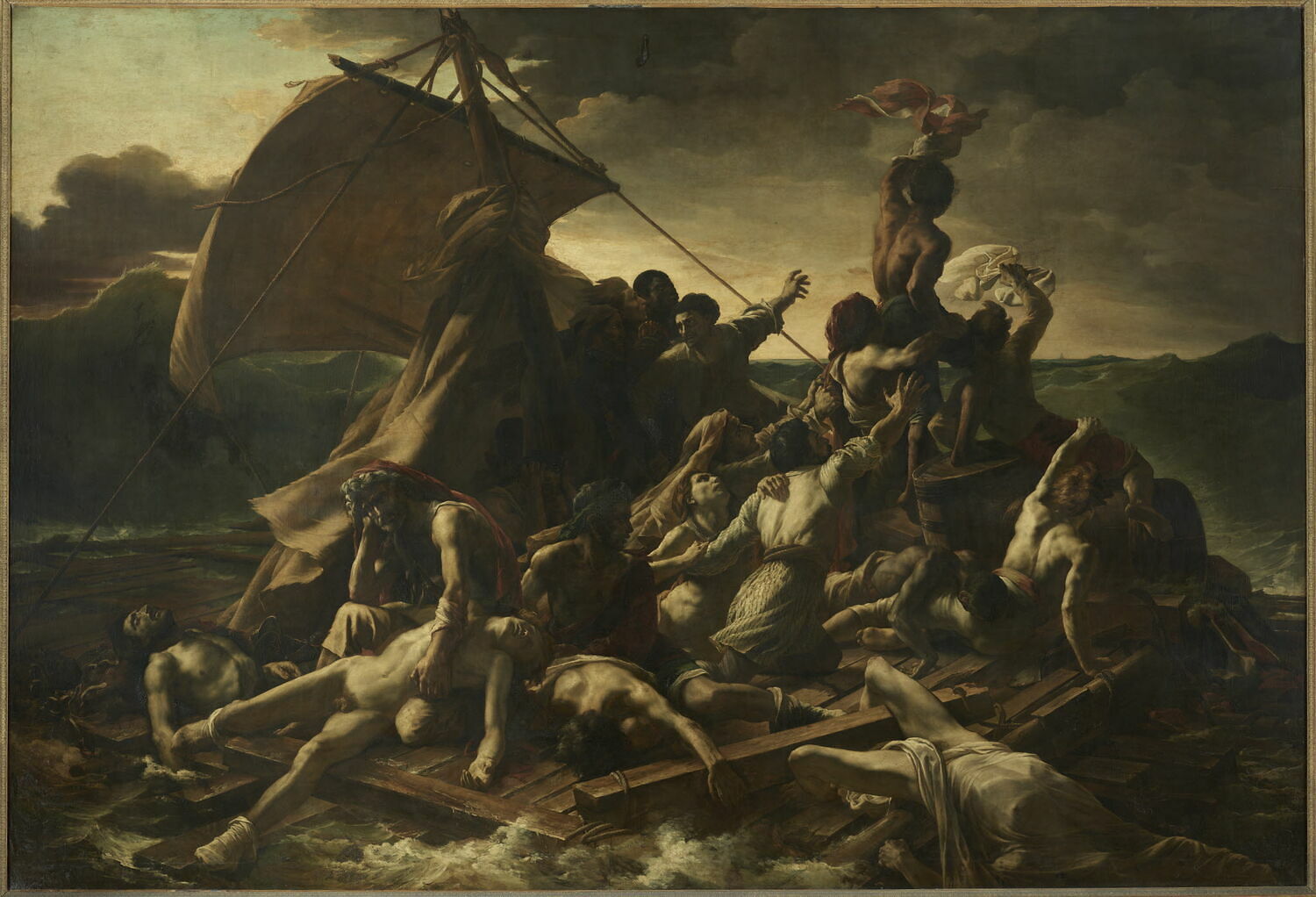+39 0669887260 | info@wucwo.org | Contact us
Art for Meditation - May 2025
Théodore Géricault (Rouen 1791 - Paris 1824), The Raft of the Medusa, 1818/19, oil on canvas, 491 x 716 cm, Paris, Musée du Louvre
Signs of Hope: Migrants.
The huge canvas we see refers to an event that took place on 2 July 1816 and caused a great commotion in Paris and throughout France. On that day, the frigate Méduse ran aground in the Atlantic Ocean about 160 km off the coast of present-day Mauritania. After several attempts to refloat the ship, more than 250 people were saved by climbing into lifeboats on 5 July; the remaining 150 found a place on a large raft and wandered in the ocean for 15 days, until the only 15 who were still alive were rescued by a boat.
Although I am aware of the transposition that is being made, I confess that every time I look at this painting, It immediately brings to my mind the sad situation in which dozens and hundreds of migrants find themselves as they cross the Mediterranean in search of refuge and salvation on the shores of southern Europe.
Now let us look carefully at the painting and try to allow ourselves to be challenged by the details and the overall representation.
The precariousness of Géricault's raft immediately recalls the old boats - real wrecks - that migrants are forced to board in order to attempt the crossing.
The lifeless bodies in the foreground immediately remind us of the long litany of news reports that tell us almost daily of the number of dead found at sea or on the coasts of Italy or Spain or Greece or the Aegean islands.
The gestures of those who are still alive resemble, I think, the gestures that even today's migrants make on the boats that carry them towards the shores of Europe. Some seem resigned, like the man on the left, who is holding the lifeless body of a young man (his son?) in his hands, Others seem to be calling for help, such as the man at the centre of the painting, who raises his right hand as if to draw particular attention to the condition of the figure who encircles him; still others appear hopeful and gaze toward the distance, gesturing as if to catch the eye of possible rescuers—perhaps because the sail of a ship does indeed seem to be looming on the horizon.
Even the background is the same: sea, more sea, only sea, with waves that can become threatening and bring death.
The reality of migrants is certainly broader than the glimpse offered to us by Géricault's painting (think of those who cross the border between Mexico and the United States or those who arrive in Europe by the so-called “Balkan route”), but it was enough to prepare us to welcome - I hope - the words of our dear and beloved Pope Francis:
Signs of hope should also be present for migrants who leave their homelands behind in search of a better life for themselves and for their families. Their expectations must not be frustrated by prejudice and rejection. A spirit of welcome, which embraces everyone with respect for his or her dignity, should be accompanied by a sense of responsibility, lest anyone be denied the right to a dignified existence. Exiles, displaced persons and refugees, whom international tensions force to emigrate in order to avoid war, violence and discrimination, ought to be guaranteed security and access to employment and education, the means they need to find their place in a new social context.
May the Christian community always be prepared to defend the rights of those who are most vulnerable, opening wide its doors to welcome them, lest anyone ever be robbed of the hope of a better future. May the Lord’s words in the great parable of the Last Judgement always find an echo in our hearts: “I was a stranger and you welcomed me” for “just as you did it to one of the least of these my brothers and sisters, you did it to me” (Mt 25:35.40).
(Francis, Bull of Indiction of the Jubilee 2025 Spes non confundit 13)
(Contribution by Vito Pongolini)
